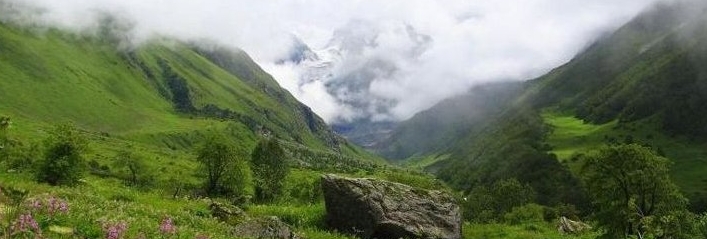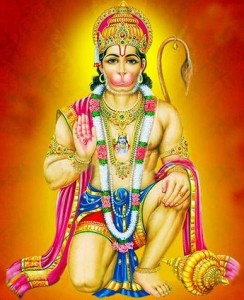Knowledge
 In the Indian epic and Puranic literature, Himalayan landscapes are described as the dwelling places of gods and goddesses. Pilgrimage shrines mark the places where the landforms themselves — mountains, rivers, forests, and lakes — are said to have acquired sacred qualities. High above the tree line, in the midst of a natural rock garden of moss, ferns, and flowers, is one such sacred place: a small, blue-green lake fed by water which cascades down from the surrounding mountain walls.
In the Indian epic and Puranic literature, Himalayan landscapes are described as the dwelling places of gods and goddesses. Pilgrimage shrines mark the places where the landforms themselves — mountains, rivers, forests, and lakes — are said to have acquired sacred qualities. High above the tree line, in the midst of a natural rock garden of moss, ferns, and flowers, is one such sacred place: a small, blue-green lake fed by water which cascades down from the surrounding mountain walls.
 The Lakshman Temple stands on the bank of Hem Kund close to the pilgrimage site of Hemkund Sahib Gurudwara. Though not as well known as the Gurudwara, the temple does attract its share of devotees who come to worship at one of the few temples that enshrines Lord Rama’s brother. The temple is built on the spot where Lakshman, who is closely associated with the Valley of Flowers, had spent time in meditation by the lake.
The Lakshman Temple stands on the bank of Hem Kund close to the pilgrimage site of Hemkund Sahib Gurudwara. Though not as well known as the Gurudwara, the temple does attract its share of devotees who come to worship at one of the few temples that enshrines Lord Rama’s brother. The temple is built on the spot where Lakshman, who is closely associated with the Valley of Flowers, had spent time in meditation by the lake.
Located in the Uttarkhand Himalaya bordering Tibet and Nepal, it is accessible only between June and October when the sun and monsoon rains melt the ice and snow that are its namesake. Then, the steep stone footpath that leads to the lake is crowded with pilgrims and tourists. They journey to the base of the route on foot from neighbouring mountain valleys, or from the plains in buses, cars, and trucks, on scooters and bicycles, even by foot. Then for two days they climb upward. Some walk, some ride mules, and some are carried by porters.
Finally, at the top of more than a thousand stone steps, the holy lake, the Sri Hemkund Sahib Gurdwara, and the Sri Lakshman Mandir come into view. High in the snow capped mountains of the Himalaya this site has been hidden from sight for eons. For thousands of years this place has remained unknown to humans, a place of utter beauty and peaceful serenity. Here a natural lake lies on a plateau at a height of 15,000 feet surrounded by seven snow clad peaks. To the Sikhs this place is known as Hemkund Sahib.
Before this site was discovered by the Sikhs it was known locally as Lokpal, which translates to ‘protector of the world’. Long a place of worship and pilgrimage by the local Hindu population, it is a place linked to the Hindu trinity of the creator – Brahma, the sustainer – Vishnu and the destroyer – Shiva. The Vedas and Purana texts of ancient India mention the Himalaya as the abode of the gods and goddesses, the locals tell a modified version of the Ramayana which actually is cast in far off Lanka (Sri Lanka).
 In the historic version, Lakshman, the brother of Rama, is mortally wounded in battle while he is leading Hanuman’s army of Monkeys against some demons sent by Raavana the villainous Demon Ruler of Lanka who has stolen Sita the wife of Rama. To save the fallen hero, the Hindu God Hanuman (at left) jumps all the way from Lanka (Sri Lanka) to the Himalayas to get a rare plant that will save Lakhsman’s life.
In the historic version, Lakshman, the brother of Rama, is mortally wounded in battle while he is leading Hanuman’s army of Monkeys against some demons sent by Raavana the villainous Demon Ruler of Lanka who has stolen Sita the wife of Rama. To save the fallen hero, the Hindu God Hanuman (at left) jumps all the way from Lanka (Sri Lanka) to the Himalayas to get a rare plant that will save Lakhsman’s life.
In the local version, Lakhsman was brought to the shores of this lake by his wife. Here, she prayed to Hanuman the (Vanara) or monkey god to save Lakhsman’s life. Hanuman heard her prayers and found the life giving herb called Sanjivani Bhutti. This was given to Lakshman and he was revived. The gods were overjoyed and went to Lord Bramha to give thanks, seek his blessing and protection from the demons who ravaged the world. In their version the myth of Hanuman and Lakhsman has been blended with Sikhi to include Guru Nanak and Guru Gobind Singh, whereby Lord Brahma told them that only Nanak the ‘saviour of the universe’ can assist them in his tenth incarnation, in which, the tales relate, he will destroy evil and tyranny and will become the protector of the holy people. (from SikhiWiki)
This story is from long ago (and may not have much meaning for us in modern times — however I do remember those ‘flying monkeys’ from the Wizard of Oz movie) but my own story of a pilgrim’s search for Knowledge began in 1981 when I was living in Denver, Colorado. I was attending a meeting of the Association for Research and Enlightenment one afternoon, became bored, left the meeting, and was waiting at the bus stop for a ride home. An attractive, young woman sat down beside me on the bus stop bench and mentioned that she had also just left the meeting. We started to talk and she told me about where she was going … a nearby house where people interested in finding and sharing spiritual knowledge could be met. So, I tagged along with her and ended up meeting several devotees of Prem Rawat. (A bit of history here is in order: Prem Rawat is a child of post Imperial rule India — he was born in 1957, just ten years after Independence from Britain. Prem Rawat’s work and mission were inherited in 1966 from his father, Shri Hans Ji Maharaj, adopting the role of ‘Perfect Master’ at the age of eight. It was very much a part-time role for five years or so, whilst he pursued his schooling, at the Catholic St. Joseph’s Academy in Dehra Dun, now the capital of Uttaranchal state.  By 1969, several Westerners had visited Prem Rawat at Prem Nagar Ashram at Haridwar, and received ‘Knowledge’. In October of that year he sent a close disciple, Mahatma Guru Charnanand, to London to open the first Western ashram. In 1970, Rawat, at the age of 13, held a massive public event he called the ‘Peace Bomb’ at India Gate, Delhi. A million people attended. This program marked the peak of his popularity.) The rest, as people say, is history. After several more meetings and after attending a public introductory talk given by Prem Rawat in Denver that year, I made the decision to accept him as a teacher of spiritual Knowledge. I identified myself with the role of devoted student and have done so for the past thirty years.
By 1969, several Westerners had visited Prem Rawat at Prem Nagar Ashram at Haridwar, and received ‘Knowledge’. In October of that year he sent a close disciple, Mahatma Guru Charnanand, to London to open the first Western ashram. In 1970, Rawat, at the age of 13, held a massive public event he called the ‘Peace Bomb’ at India Gate, Delhi. A million people attended. This program marked the peak of his popularity.) The rest, as people say, is history. After several more meetings and after attending a public introductory talk given by Prem Rawat in Denver that year, I made the decision to accept him as a teacher of spiritual Knowledge. I identified myself with the role of devoted student and have done so for the past thirty years.
Now, my story jumps forward in time about six years. I had become a college student at the age of 35 — a late start, admittedly, but one that enabled me to know exactly what I wanted to achieve studying at the university level. I chose Friends World College, in Huntington, New York because, at the time, they had regional centers around the world where students could travel and design their own courses of individual study, including locating individual teachers in each host country. I spent a semester each in Europe (London) and the Middle East (Jerusalem). Then, I made my way to India and spent a couple of years in its southernmost state, Tamil Nadu. I graduated in 1987 and moved to north India, in the state of Uttar Pradesh. I was in the hills of the Himalaya for six months, preparing for post-graduate study — again locating teachers and deciding what to study. It was only natural to visit Prem Nagar Ashram where Prem Rawat’s experience as a teacher had all begun.
 Over the next three years, I was supported by Prem Rawat’s older brother, Shri Satpal Maharaj, as I pursued my M.A. I was fortunate to travel to many of the public discourses attended by his devotees. I also had the luck to spend some personal time with him. One such time was during a pilgrimage he personally made to Hem Kund where he placed a statue of Lakshman in the temple there (thus my introductory background related above). We traveled by car to the trail head but went further up in the mountains on the backs of mules. I wasn’t too comfortable on the back of such an animal on a steep and narrow path so I ended up walking the rest of the distance to the top. I spent one night in a tent near the temple but was quickly hustled back down the mountain the next morning so I wouldn’t be in danger of altitude sickness. It was a trip I will never forget and I have fond memories of the times I was able to spend with Shri Satpal Maharaj. Later on, while I was living in Nepal, my own brother traveled from the U.S.A. to meet me. He also visited Prem Nagar Ashram and received Knowledge there. My own initiation into Knowledge coincided with a period of personal growth for me that began in the U.S.A. in 1981 and led me back to Asia where I have lived most of the rest of my life. After another year or so, I will be ready for another cycle of growth and look forward to another exploration of south Asia following a revitalized spirit of adventure.
Over the next three years, I was supported by Prem Rawat’s older brother, Shri Satpal Maharaj, as I pursued my M.A. I was fortunate to travel to many of the public discourses attended by his devotees. I also had the luck to spend some personal time with him. One such time was during a pilgrimage he personally made to Hem Kund where he placed a statue of Lakshman in the temple there (thus my introductory background related above). We traveled by car to the trail head but went further up in the mountains on the backs of mules. I wasn’t too comfortable on the back of such an animal on a steep and narrow path so I ended up walking the rest of the distance to the top. I spent one night in a tent near the temple but was quickly hustled back down the mountain the next morning so I wouldn’t be in danger of altitude sickness. It was a trip I will never forget and I have fond memories of the times I was able to spend with Shri Satpal Maharaj. Later on, while I was living in Nepal, my own brother traveled from the U.S.A. to meet me. He also visited Prem Nagar Ashram and received Knowledge there. My own initiation into Knowledge coincided with a period of personal growth for me that began in the U.S.A. in 1981 and led me back to Asia where I have lived most of the rest of my life. After another year or so, I will be ready for another cycle of growth and look forward to another exploration of south Asia following a revitalized spirit of adventure.
Dhane Blue, October 7, 2011